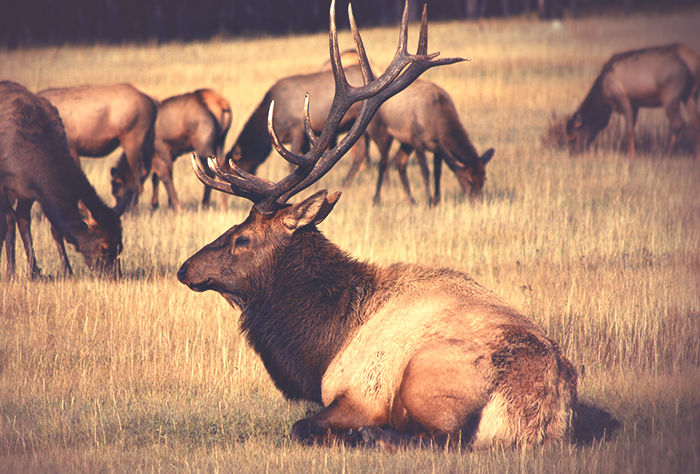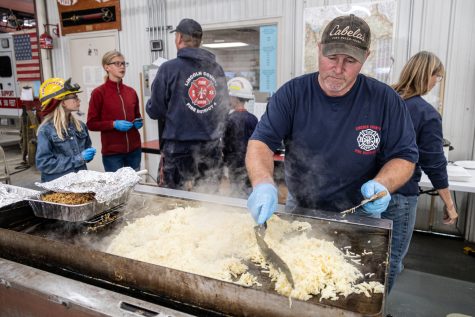Elk hoof disease management
March 3, 2017
Senate Bill 5474, which passed the Senate yesterday, addressed elk hoof disease that has been affecting cloven-hoofed animals in Washington and surrounding areas.
This bill came about after increased reporting of elk hoof disease spread across the state, as well as to some parts of Oregon and the Cascades, according to the office of Sen. Kirk Pearson (R). This caused concern that the disease is growing out of control, officials from Pearson’s office said.
{{tncms-asset app=”editorial” id=”1fd1e914-ffdd-11e6-bacd-53844cec45e1″}}
Pearson’s spokesperson said they have been waiting for the Washington Department of Fish and Wildlife (WDFW) to step in, but the department has not taken action in any sort of aggressive way.
If passed, the bill would provide $775,600 in funding to the WSU College of Veterinary Medicine from 2017-19 to research the disease and possible treatments and cures.
The bill would also put procedures in place to prevent diseased elk from being moved so the disease does not spread further.
Charlie Powell, senior communication manager for the college, said they won’t know their full responsibilities until the bill is passed and assigned by Gov. Jay Inslee.
“We fully anticipate to continue working with the Washington Department of Fish and Wildlife, as well as other state game agencies, because Washington is not the only state that is suffering with this disease,” Powell said.
Dealing with wildlife can be difficult when it comes to disease because of animals’ free-ranging nature, and the problem becomes “how do you medicate this” for the animals, he said.
Elk are not the only animals that are affected by elk hoof disease, either. The disease occurs in cattle, sheep and other animals, but is not currently known to be transmitted from animal to animal, Powell said.
Kristin Mansfield, veterinarian for the WDFW and member of the Elk Hoof Disease Technical Advisory Board, said she does not understand what Pearson’s objective is by transferring this research project over to WSU.
“I don’t object [to the funding going to WSU], but I don’t see what more is going to be gained because we already have the best minds at WSU on our technical advisory group,” Mansfield said.
The board, part of the WDFW, includes 16 people, six of which are from WSU.
Pearson’s office responded to Mansfield, saying WDFW hadn’t held any meetings with the board recently, they had been fairly idle and their response to the disease had been a “shrug.”
For these reasons, the funding is going toward the WSU College of Veterinary Medicine, because the teams there will focus more on the scientific reasons for the spread and finding a medical solution, officials from Pearson’s office said. The WDFW was not giving that type of response, according to the senator’s office.
Craig Bartlett, public information officer for the WDFW, said funding was going to WSU from the start, and Pearson was disappointed over the lack of results they were showing for this disease.
“We have a base budget for hoof disease, but the senator never offered that money to us [or] any additional money to us,” Bartlett said.
Mansfield said the roster for the technical advisory board has not been updated in more than a year, but the board has been engaging WSU and the state veterinarian’s office for five years trying to combat the issue.
“It’s not like we’ve been sitting on our hands,” she said. “Sometimes it seems that people can’t accept that there isn’t a cure for every disease, like the common cold, or like cancer. That’s why we continue to research it.”
{{tncms-asset app=”editorial” id=”5e8ff308-ffdd-11e6-bdf7-6f78f96dd6a3″}}
This disease is a form of infectious digital dermatitis, Mansfield said, which is caused by treponeme bacteria. This is the most common disease of dairy cattle, but it manifests more severely in elk, sheep and goats.
Over time, the disease slowly disfigures the hooves of cloven-hoofed animals. This can cause the creatures discomfort and pain, which makes things like walking, standing and eating difficult. This pain often leads to starvation, Powell said.
“That’s what makes this so difficult for animals,” he said. “Their feet are deformed, they’re painful and they’re not able to compete with other elk and protect themselves.”
There are management techniques used in cattle and sheep that lessen the instances or severity of the disease, such as foot baths. This issue is these techniques are management-intensive, which makes it near impossible to use them on wild animals, Powell said.
If similar management techniques were attempted on animals like wild elk, in many cases this would be fatal, or could injure the animals severely, he said.
It’s a costly disease, Mansfield said, and no effective way to cure or treat it has been found in dairy cattle that are handled twice a day, let alone in a wild population where elk cannot be managed as intensively.
“I wish I could wave a magic wand and cure and prevent and treat this,” she said.
It is a significant disease for the dairy industry economically, and also from an animal welfare perspective, Mansfield said. The USDA prioritized it as a disease to which they are directing research funds, she said. WDFW has been working closely with USDA labs for research and diagnostics for elk.
“No one likes to see wildlife suffer,” Powell said.


















